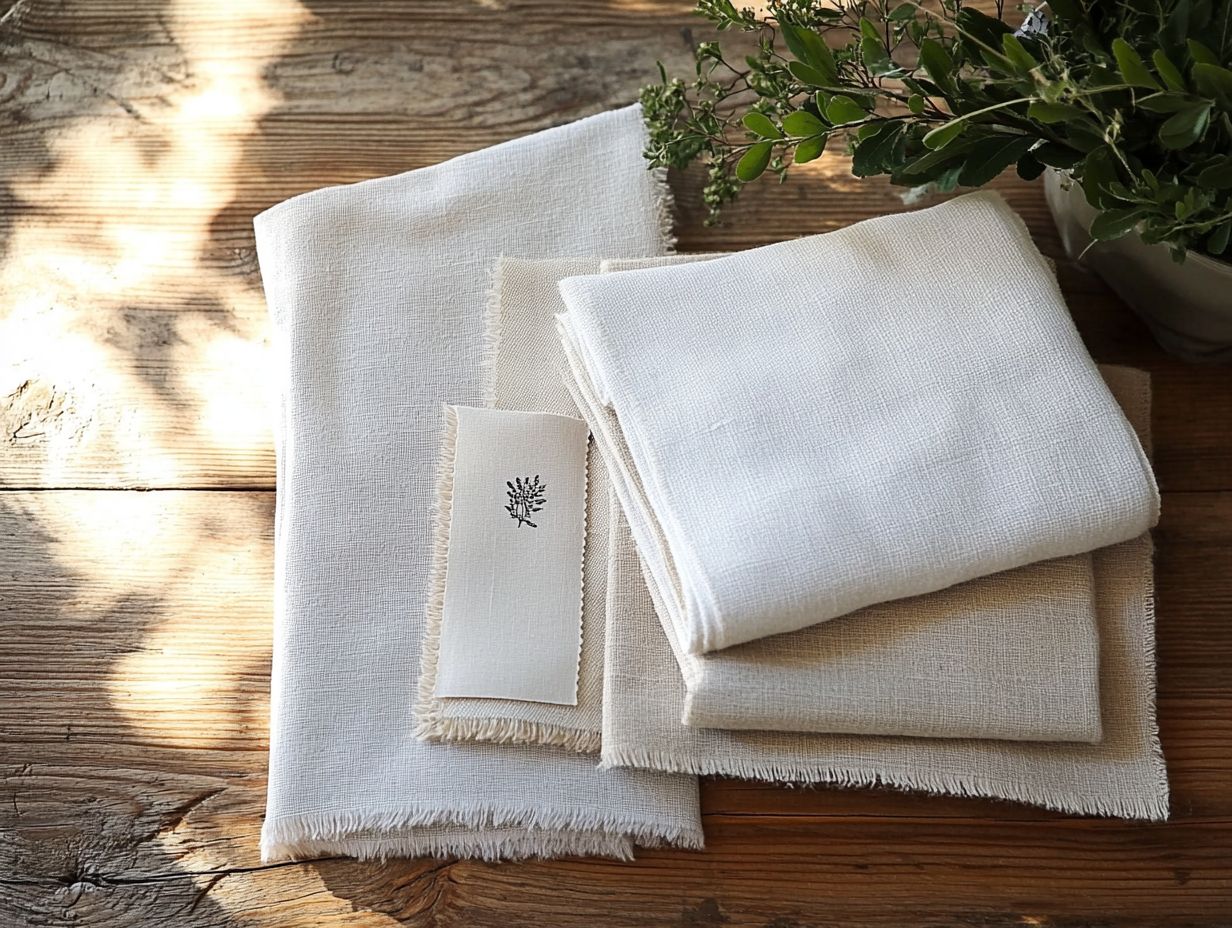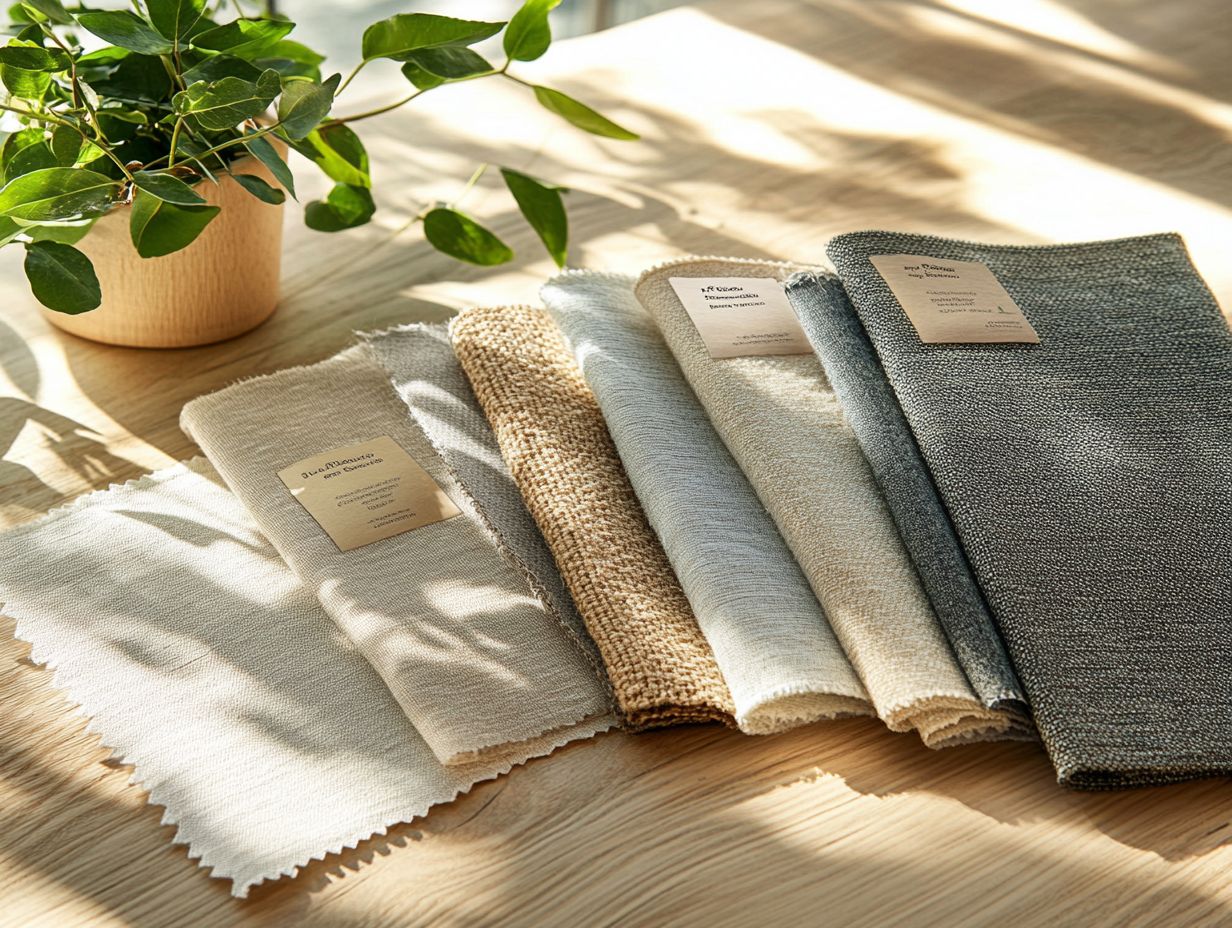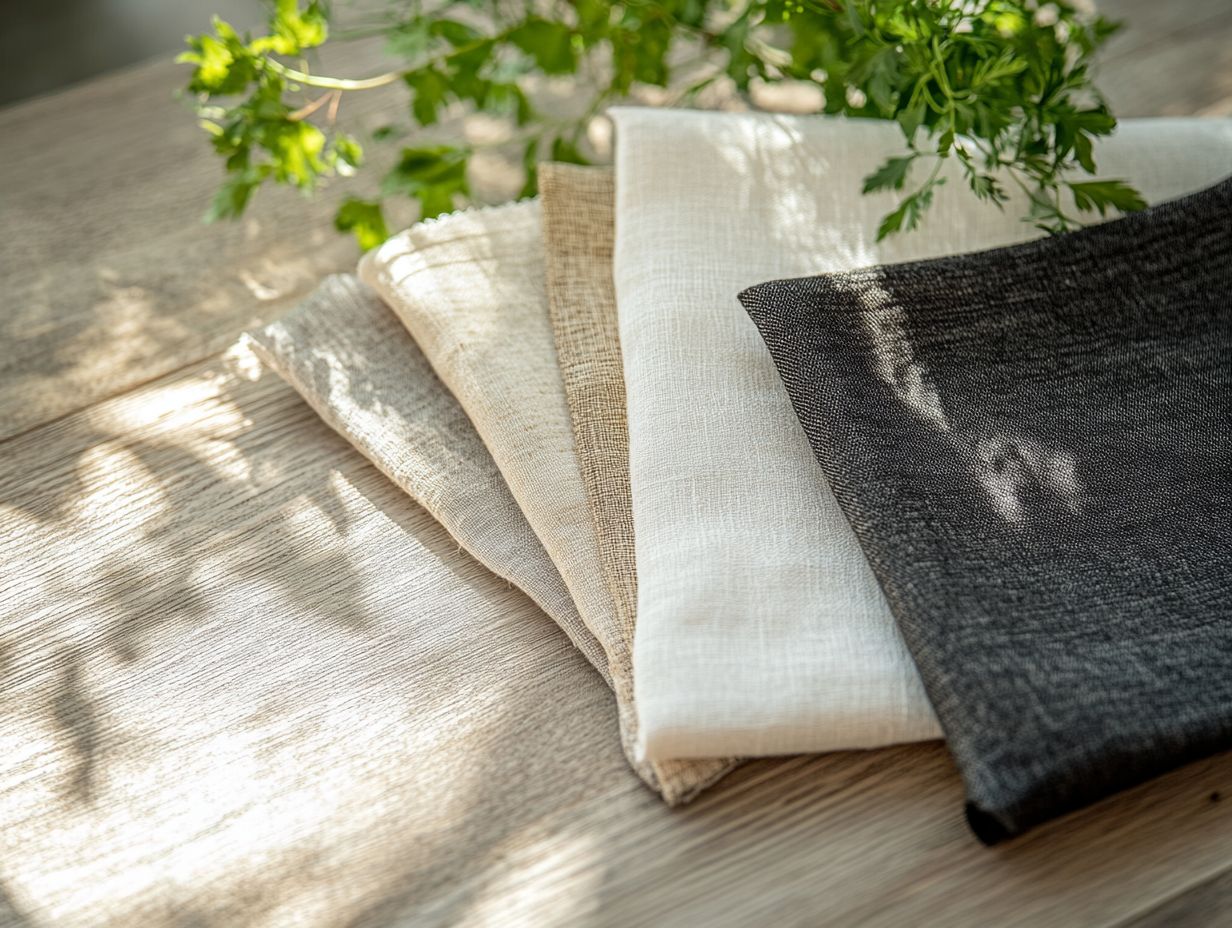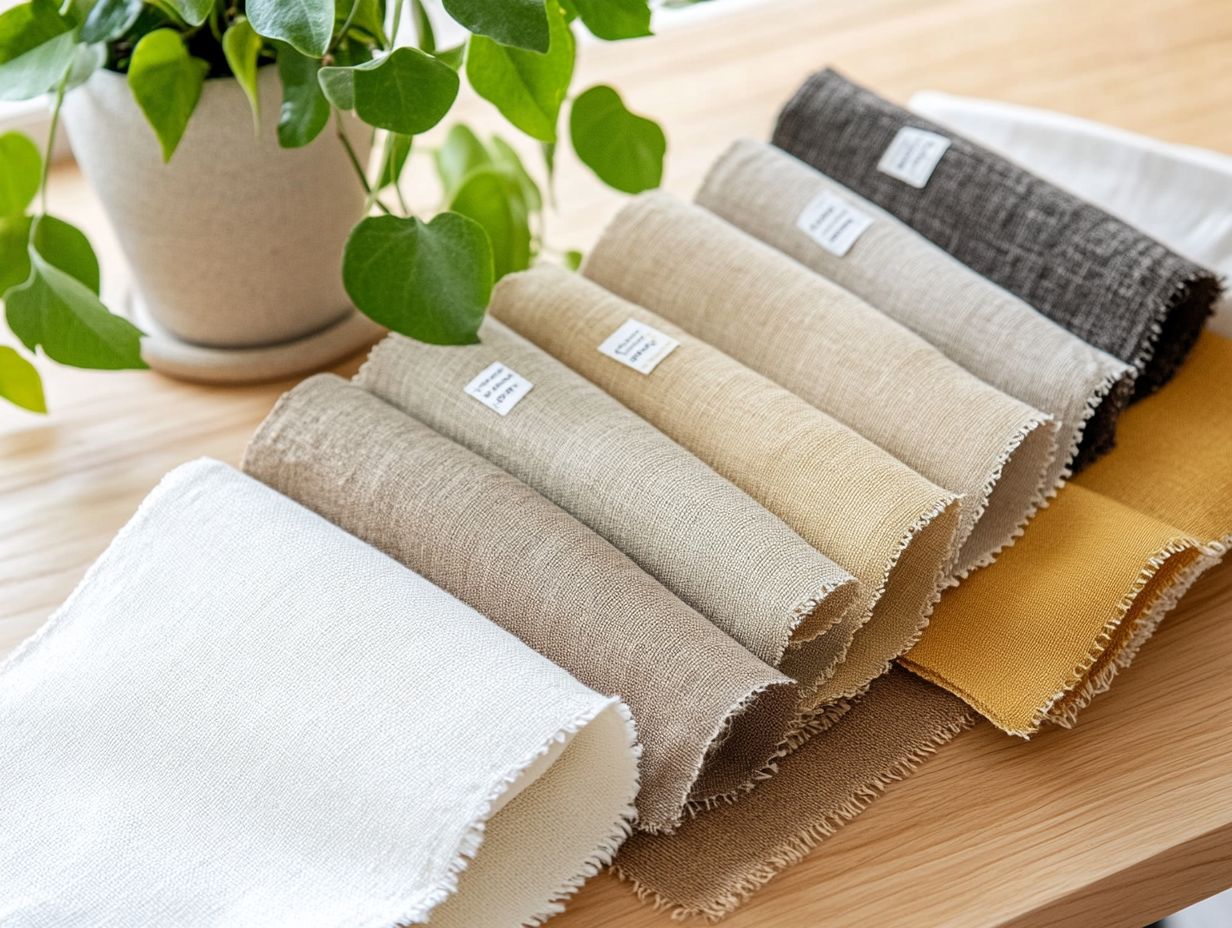How to Identify Genuine Sustainable Materials
In a world that is becoming ever more conscious of environmental challenges, grasping the concept of sustainable materials is essential.
This article explores what these materials are and why they matter. It tackles prevalent misconceptions, outlines key criteria for identifying authentic sustainable options, and showcases real-world examples of eco-friendly fabrics and recycled resources.
You ll uncover practical tips to integrate these materials into your life. Join us on this journey toward sustainability and discover practical tips for a greener lifestyle.
Contents
- Key Takeaways:
- Understanding Sustainable Materials
- Common Misconceptions About Sustainable Materials
- Key Criteria for Identifying Genuine Sustainable Materials
- Examples of Genuine Sustainable Materials
- Eco-Friendly Fabrics
- Recycled Materials
- Renewable Resources
- How to Incorporate Sustainable Materials into Your Life
- Frequently Asked Questions
Key Takeaways:

- Genuine sustainable materials must meet all three key criteria: environmental impact, social impact, and economic viability.
- Don’t be fooled by greenwashing – do your research and look for certifications to ensure the sustainability of materials.
- Small changes, such as incorporating eco-friendly fabrics or using recycled materials, can make a big impact in promoting sustainability in our daily lives.
Understanding Sustainable Materials
Grasping the importance of sustainable materials is essential for making smart buying choices. These materials not only reduce environmental impact but also support sustainability.
By opting for eco-friendly options and ethically sourced products, you contribute to a cleaner, healthier planet while supporting companies that care about their impact on society. As eco-conscious consumers like yourself continue to rise in number, the demand for transparency in sustainability has prompted businesses to prioritize the use of sustainable raw materials and implement effective recycling programs.
This shift minimizes waste and greenhouse emissions and aligns with your values as a thoughtful consumer.
Definition and Importance
Sustainable materials are products that you can confidently choose, as they are sourced and manufactured with a keen focus on environmental responsibility and adherence to strict sustainability standards. By opting for these materials, you’re actively reducing their overall ecological footprint.
These materials are vital in the fight against climate change, as they minimize the depletion of natural resources and cut down on greenhouse gas emissions. Take organic cotton, bamboo, and recycled metals, for example each represents a commitment to sustainability.
- Organic cotton steers clear of harmful pesticides and actively promotes soil health.
- Bamboo is a superstar in renewability, growing swiftly and requiring minimal water.
- Recycled metals are equally impressive, conserving energy and reducing pollution by reusing existing materials.
Together, these sustainable choices contribute to a broader shift toward environmental consciousness, enabling you to make informed decisions that benefit both the planet and future generations.
Common Misconceptions About Sustainable Materials
Despite the increasing appeal of sustainable materials, you may find that numerous misconceptions persist, creating confusion and limiting your engagement as a consumer. This is especially true when it comes to issues like greenwashing and the misleading marketing tactics employed by certain brands.
Debunking Myths and Misunderstandings
Debunking myths and misunderstandings about sustainable materials is vital for cultivating your environmental awareness and enabling you to make informed choices.
You might think that every product labeled as eco-friendly or sustainable meets high environmental standards, but that s a common misconception. In reality, manufacturers often employ various tactics to market their products favorably, which can lead to the troubling phenomenon known as greenwashing.
This can cloud your understanding of the true impact of materials on our planet, making it difficult to recognize genuinely sustainable options.
To navigate this intricate landscape, it’s essential for you to familiarize yourself with certifications and materials. Understanding the truth about sustainable vs. conventional materials will help you actively promote authentic sustainability in your purchasing decisions.
Key Criteria for Identifying Genuine Sustainable Materials

Identifying authentic sustainable materials involves a keen understanding of essential criteria, including their environmental impact, ethical sourcing practices, and knowing how to research sustainable materials for your home that have the backing of third-party certifications like Energy Star or Fair Trade.
By focusing on these elements, you can ensure that your choices are not only environmentally responsible but also aligned with ethical standards.
Environmental Impact
The environmental impact of materials is a pivotal aspect in assessing their sustainability. It covers everything from getting raw materials to production processes and end-of-life disposal.
As you delve into these processes, it’s vital to understand how your choice of materials can shape pollution levels and greenhouse gas emissions. For example, getting raw materials can disrupt ecosystems, leading to habitat loss and increasing air and water pollution.
The manufacturing methods you choose can also release harmful pollutants into the atmosphere, negatively affecting air quality.
To combat these issues, implementing effective pollution prevention strategies like recycling and utilizing renewable energy sources is essential. By prioritizing sustainable practices, you not only diminish your environmental footprint but also contribute to a healthier planet for future generations.
Social Impact
The social impact of sustainable materials reaches far beyond mere environmental considerations; it encompasses ethical sourcing practices and promotes social equity within the communities directly involved in their production.
When you choose to embrace sustainable materials, you often witness a remarkable transformation in local economies and job markets. Workers within these supply chains typically benefit from fair wages and improved working conditions, along with an enhanced sense of dignity, as their contributions are valued not just for profit but for their role in fostering environmental integrity.
Companies that prioritize ethical labor practices generally cultivate strong relationships with local communities, instilling a sense of partnership and shared responsibility. This engagement can pave the way for improved educational opportunities and skill development, yielding long-term benefits that ripple through families and neighborhoods.
Ultimately, your choice of sustainable materials intricately ties the health of the environment to the well-being of communities, revealing a complex web of interconnected benefits.
Economic Viability
Economic viability is a crucial element of sustainable materials. To drive widespread adoption and integration into sustainable supply chains, these materials must be accessible and affordable.
Understanding the cost implications is vital, as you likely compare these green alternatives with traditional materials based on initial investment. It’s common for individuals to hesitate when considering sustainable options due to the perception of higher prices.
However, studies reveal that over time, these materials can lead to significant savings in energy and maintenance costs.
As more manufacturers embrace sustainable practices, economies of scale the cost advantages of scale production can help lower prices, potentially changing your perception. This shift not only influences your purchasing decisions but also encourages businesses to invest in environmentally friendly materials, creating a positive feedback loop for the market.
Examples of Genuine Sustainable Materials
Discover a treasure trove of authentic sustainable materials that make a real difference! Consider options like organic cotton, recycled materials, and renewable resources such as bamboo.
Each of these choices not only supports environmental well-being but also reflects a commitment to a more sustainable future.
Eco-Friendly Fabrics

Eco-friendly fabrics like organic cotton and hemp are crafted with minimal packaging and non-toxic ingredients. They are the ideal choice for those who care about the environment.
These materials are fantastic! They cut down on harmful pesticides and chemicals while supporting biodiversity and enhancing soil health through sustainable cultivation practices. Fabrics such as Tencel, derived from sustainably harvested wood pulp, and recycled polyester, created from post-consumer plastic waste, are innovative solutions that help minimize environmental impact.
By prioritizing ethical sourcing practices and fair labor conditions, brands can ensure their products resonate with your values of sustainability. Certifications like GOTS (Global Organic Textile Standard) or OEKO-TEX provide peace of mind, confirming that these eco-friendly options meet rigorous environmental and social standards. This ultimately supports a more sustainable fashion industry.
Recycled Materials
Recycled materials play a crucial role in waste management and embrace the principles of circular design, which allows materials to be reused, reducing waste. This significantly bolsters waste reduction efforts across various industries.
Their importance goes beyond simple disposal; they spark innovation in product development and packaging solutions. By repurposing materials like plastic, paper, and metals, you can minimize your environmental footprint while attracting eco-conscious consumers.
For instance, brands like Patagonia have integrated recycled fabrics into their outdoor apparel, greatly reducing the need for virgin resources.
Similarly, Coca-Cola has pledged to use 50% recycled material in its PET plastic bottles by 2030. This reflects a proactive approach to sustainability that resonates with consumers committed to environmental stewardship.
These initiatives not only enhance product offerings but also inspire other companies to embark on the journey toward a more sustainable future.
Renewable Resources
Renewable resources like bamboo and sustainably sourced wood are crucial for advancing clean energy practices and minimizing environmental impact throughout their lifecycle.
These resources serve as excellent alternatives to non-renewable options like fossil fuels and traditional lumber, significantly cutting down on carbon emissions. When you choose bamboo, you benefit from its rapid harvest cycle and its ability to sequester carbon as it grows. This makes it a remarkably efficient building material.
Sustainably sourced wood ensures that forestry practices maintain ecological balance, preventing deforestation and safeguarding wildlife habitats. By embracing these alternatives, you play a vital role in fostering a circular economy where materials are reused and recycled. This ultimately contributes to healthier ecosystems and a more sustainable future.
How to Incorporate Sustainable Materials into Your Life
Incorporating sustainable materials into your life demands deliberate choices in your shopping habits. It s essential to seek out eco-conscious brands that are genuinely committed to corporate social responsibility and ethical practices.
By making these intentional selections, you contribute to a more sustainable future while aligning your purchases with your values.
Join the movement for a greener planet today!
Tips for Making Sustainable Choices
Making sustainable choices means selecting eco-friendly products that not only minimize environmental impact but also enhance community engagement. This way, we can all join the effort for a sustainable future.
Look for certifications like Fair Trade or Energy Star. These signify a brand’s commitment to environmentally responsible practices. Check the materials used in products; choosing biodegradable materials, which break down naturally, or recycled options can greatly reduce waste.
Supporting local and eco-conscious brands boosts your community and often leads to lower transportation emissions. By researching brands that prioritize ethical practices and transparency, you can make informed decisions that resonate with your values. This promotes a greener planet for future generations.
Frequently Asked Questions

What makes materials truly sustainable?
Genuine sustainable materials are sourced, produced, and used in a way that is environmentally friendly and socially responsible. To ensure their longevity and reduce environmental impact, it’s essential to know how to maintain sustainable home materials, as they are made from renewable resources and are ethically produced.
How can I identify genuine sustainable materials?
There are a few key factors to look for when identifying genuine sustainable materials. These include what to look for in sustainable home materials, their source and production process, their environmental impact, and any certifications or labels they may have.
What are some common sustainable materials?
Some common sustainable materials include organic cotton, bamboo, recycled plastic, and reclaimed wood. These materials are often used in clothing, furniture, and packaging, among other products.
What are some certifications or labels to look for?
Look for certifications such as the Global Organic Textile Standard (GOTS), Forest Stewardship Council (FSC), and the Fair Trade Certified label. These indicate that the materials have been produced in an environmentally and socially responsible manner.
Are all “eco-friendly” materials sustainable?
No, not all “eco-friendly” materials are necessarily sustainable. Some might be marketed as eco-friendly due to their production process or characteristics but may not be sustainably sourced or produced. It’s crucial to look for specific certifications or labels to ensure the sustainability of materials.
Why is it important to use genuine sustainable materials?
Using genuine sustainable materials helps reduce our impact on the environment and promotes ethical production practices. It supports the growth of a more sustainable and eco-friendly economy. By understanding the importance of certifications in sustainable materials, we can make a positive impact on the planet and future generations.
Start making eco-friendly choices today! Every small decision counts.






